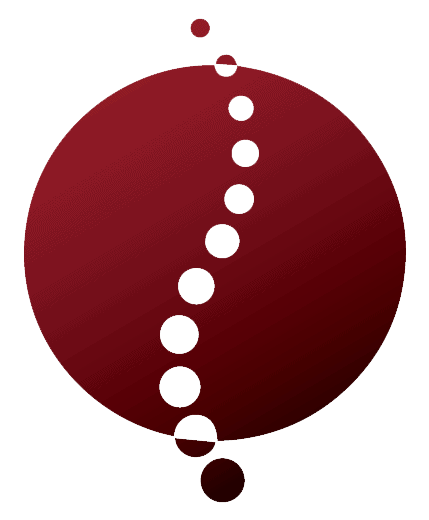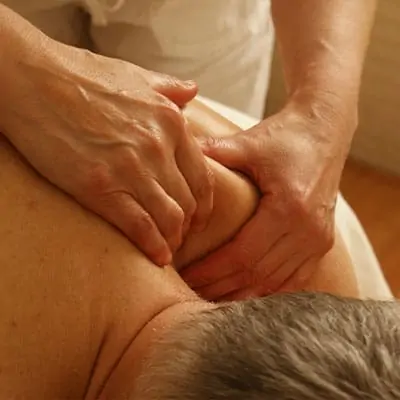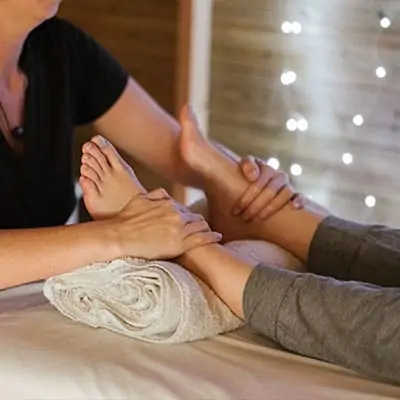The Power of Trigger Point Massage Therapy
Understanding Trigger Points
Trigger points are specific, localized areas of muscle tissue that are sensitive to touch and can often produce pain in other areas of the body. These knots can form due to various reasons, including repetitive movement, poor posture, or physical stress. Identifying and treating these trigger points can significantly enhance your overall well-being and relieve discomfort.
| Trigger Point Characteristics | Description |
|---|---|
| Location | Found in muscle tissue, typically near junctions with tendons |
| Pain Referral | Can cause pain in distant areas (referred pain) |
| Sensitivity | Tender to pressure and may produce discomfort when pressed |
Understanding trigger points is crucial for effective massage therapy benefits. Recognizing where these points exist in your body can help you target the right areas during therapy sessions.
Benefits of Trigger Point Massage Therapy
Trigger point massage therapy focuses on alleviating the pain and tension associated with these muscle knots. Here are some notable benefits you can experience:
| Benefit | Description |
|---|---|
| Pain Relief | Reduces chronic pain and discomfort by relaxing tight muscles. |
| Improved Flexibility | Increases range of motion by releasing tension in the muscles and joints. |
| Better Circulation | Enhances blood flow, promoting healing and overall health. |
| Stress Reduction | Helps alleviate stress and anxiety by promoting relaxation throughout the body. |
| Enhanced Recovery | Assists in recovery from injuries or muscle strains through targeted treatment. |
Incorporating trigger point therapy into your wellness routine can provide lasting relief for muscle pain and improve your quality of life. For alternative approaches, consider exploring therapeutic massage therapy or other types of massages like deep tissue massage therapy and sports massage therapy.
How Trigger Point Therapy Works
Trigger point therapy is a specialized form of massage that focuses on identifying and treating tight areas within muscle tissue known as trigger points. Understanding how this therapy works can help you find relief from discomfort and improve your overall well-being.
Targeting Specific Areas
During a trigger point massage session, the therapist targets specific muscle groups where trigger points are located. These trigger points can lead to pain, stiffness, and reduced mobility. By applying direct pressure, the therapist works to release these tight spots, promoting relaxation and improved blood flow.
The following table outlines common muscle groups affected by trigger points:
| Muscle Group | Common Symptoms |
|---|---|
| Neck | Headaches, neck pain |
| Shoulders | Shoulder pain, tightness |
| Back | Lower back pain, tension |
| Hip Flexors | Hip pain, pain radiating to thighs |
| Calves | Leg cramps, tightness |
By focusing on these areas, you can often experience significant relief from pain and discomfort.
Relieving Muscle Tension
Relieving muscle tension is another key function of trigger point therapy. When pressure is applied to a trigger point, it can create a reflexive relaxation response in the muscle, which helps alleviate tightness. This process aids in restoring flexibility and enhancing the function of the affected muscles.
The effectiveness of trigger point therapy can often be seen in these ways:
| Benefits | Description |
|---|---|
| Decreased Pain | Reduces discomfort related to chronic pain conditions |
| Improved Range of Motion | Enhances mobility in affected areas |
| Enhanced Circulation | Increases blood flow, promoting healing |
| Stress Relief | Provides a sense of relaxation and reduces anxiety |
Incorporating trigger point massage therapy into your routine can lead to long-term improvements in muscle condition and overall body function. If you’re interested in exploring other massage options, check our article on types of massage therapy. This understanding of how trigger point therapy works can guide you in seeking appropriate care for your specific symptoms.
Conditions Treated with Trigger Point Therapy
Trigger point massage therapy can address a variety of conditions, providing relief from discomfort and restoring functionality. Here are some of the primary issues for which you can benefit from this therapeutic approach.
Chronic Pain
Chronic pain is often linked to muscle tightness and trigger points. This type of pain can affect multiple areas of the body, leading to discomfort that persists for weeks, months, or even years. Trigger point therapy is effective in alleviating this pain by targeting specific taut bands within the muscles. By applying pressure to these trigger points, the therapist can help release muscle tension and reduce pain.
| Condition Type | Prevalence (%) |
|---|---|
| Chronic Neck Pain | 20% |
| Chronic Back Pain | 27% |
| Chronic Joint Pain | 15% |
Consultation with a professional therapist may provide additional techniques such as deep tissue massage therapy or rehabilitation massage therapy that can help manage your chronic pain effectively.
Headaches and Migraines
Headaches and migraines are often rooted in muscle tension that leads to trigger points in the neck and shoulders. Trigger point massage therapy can reduce the frequency and intensity of headaches by relaxing tight muscles and improving blood flow.
| Type of Headache | Prevalence (%) |
|---|---|
| Tension Headaches | 78% |
| Migraines | 12% |
If you are experiencing frequent headaches, trigger point therapy may complement other treatments. Learn more about the benefits of various massage therapy techniques to discover which approach works best for you.
Muscle Strain and Injury
Trigger point therapy is helpful for recovering from muscle strains and injuries. When muscles are injured, trigger points can develop as the body compensates for discomfort. This treatment works by alleviating the muscle tightness associated with injuries, promoting healing and enhancing mobility.
| Type of Muscle Injury | Common Affected Areas | Recommended Therapy |
|---|---|---|
| Sprains | Ankles, Wrists | Trigger Point Therapy |
| Strains | Lower Back, Shoulders | Deep Tissue Therapy |
Using this method can improve your restoration process, particularly alongside other forms of therapeutic massage therapy tailored to your injuries.
By addressing these conditions through targeted trigger point massage therapy, you can achieve significant relief and enhance your overall well-being. Explore additional options like sports massage therapy or massage therapy for neck pain for a comprehensive approach to pain management and recovery.
What to Expect During a Trigger Point Massage
Seeking relief through trigger point massage therapy can be an effective way to alleviate pain and muscle tension. Understanding the process will help you feel more comfortable and informed before booking your session.
Assessment and Consultation
Before your massage begins, you will undergo an assessment and consultation. This initial meeting typically involves the following:
- Discussion of Symptoms: You will describe any pain, discomfort, or specific areas that need attention. This helps the therapist understand your needs.
- Medical History Review: Providing a brief overview of your medical history, including past injuries or ongoing conditions, allows the therapist to tailor the treatment accordingly.
- Posture and Movement Assessment: The therapist may evaluate your posture and range of motion to identify areas of restriction or imbalance.
This assessment is essential to develop a personalized treatment plan that targets specific trigger points.
| Component | Description |
|---|---|
| Symptoms Discussion | Your input on pain and discomfort. |
| Medical History Review | Insights into past injuries and conditions. |
| Posture Assessment | Evaluation of alignment and movement. |
Treatment Techniques
Once the assessment is complete, the therapist will utilize specific techniques to address trigger points. Common methods include:
- Deep Pressure: Applying sustained pressure to tight areas to release muscle tension and improve blood flow.
- Kneading and Rolling: Using hands to manipulate muscle fibers, which can help in breaking up adhesions and knots.
- Stretching: Incorporating gentle stretches to enhance flexibility and relieve tightness in muscles.
- Myofascial Release: Focusing on the connective tissue surrounding muscles to promote relaxation and alleviate pain.
These techniques can vary based on your specific needs and pain levels. Discussing your comfort level with your therapist is important, as adjustments can be made to ensure an effective experience.
For a deeper understanding of various massage techniques, explore our content on massage therapy techniques. If you have particular conditions you are hoping to address, consider looking into specialized massage therapies, such as massage therapy for neck pain or massage therapy for sciatica.
Self-Care Tips for Trigger Points
Incorporating self-care into your routine can enhance the benefits of trigger point massage therapy. Here are some practical tips to help you manage trigger points effectively.
Stretching Exercises
Stretching regularly helps relieve tension and improves flexibility, which can alleviate discomfort from trigger points. Consider the following stretches:
| Stretch Name | Target Area | Duration |
|---|---|---|
| Neck Stretch | Neck and Shoulders | 15-30 seconds |
| Chest Stretch | Chest and Shoulders | 15-30 seconds |
| Hamstring Stretch | Lower Back and Legs | 15-30 seconds |
| Shoulder Stretch | Shoulders | 15-30 seconds |
| Lower Back Stretch | Lower Back | 15-30 seconds |
Incorporate these stretches into your daily routine to help manage muscle tension.
Heat and Cold Therapy
Using heat and cold therapy can provide relief for trigger points. Each method has its own benefits:
| Method | Benefits | Usage Duration |
|---|---|---|
| Heat Therapy | Increases blood flow, relaxes muscles | 15-20 minutes |
| Cold Therapy | Reduces inflammation, numbs pain | 10-15 minutes |
You can alternate between heat and cold depending on your symptoms. Apply a heating pad or a warm towel for heat therapy, and use ice packs or cold towels for cold therapy.
Lifestyle Adjustments
Making certain lifestyle changes can significantly reduce muscle tension. Consider implementing these adjustments:
- Stay Hydrated: Drinking adequate water can help prevent muscle cramps and tightness.
- Maintain Good Posture: Proper posture during daily activities can minimize strain on your muscles.
- Regular Physical Activity: Engage in regular exercises like walking, swimming, or yoga to strengthen muscles and improve circulation.
- Manage Stress: Practice relaxation techniques such as meditation or deep breathing to reduce muscle tension caused by stress.
These self-care strategies can complement trigger point massage therapy and promote overall wellness. For more information on different types of massage therapy and their benefits, explore our articles on therapeutic massage therapy and sports massage therapy.
Finding the Right Massage Therapist
When seeking relief through trigger point massage therapy, finding the right therapist can greatly influence your experience and results. Consider two key factors: qualifications and credentials, as well as communication and comfort level.
Qualifications and Credentials
It is essential to verify the qualifications of your massage therapist to ensure that they are trained and experienced in trigger point therapy. Look for the following:
| Qualification | Description |
|---|---|
| Licensed Massage Therapist (LMT) | Must have completed accredited training programs and passed state examinations. |
| Additional Certifications | Specialized training in trigger point therapy or related techniques boosts proficiency. |
| Continuing Education | Participation in workshops or courses related to muscle pain management keeps skills current. |
A qualified therapist should be able to provide proof of their licensure and any additional certifications. You may inquire about their experience with trigger point massage specifically.
Communication and Comfort Level
The relationship you have with your therapist plays a crucial role in the effectiveness of the treatment. Here are some aspects to consider:
- Initial Consultation: This is your opportunity to discuss your pain points, expectations, and treatment goals. The therapist should listen actively and ask relevant questions.
- Comfort with Techniques: Express any concerns about specific techniques or areas of discomfort. Your therapist should be responsive and adjust the treatment based on your feedback.
- Creating a Safe Space: It is vital that you feel comfortable during the session. Ensure the therapist creates an environment where you can relax physically and emotionally.
By carefully assessing the qualifications and ensuring effective communication with your massage therapist, you can enhance your experience and get the most benefit from trigger point massage therapy. For more information on different techniques, visit our article on massage therapy techniques, or explore the various types of massage therapy available, such as deep tissue or sports massage.











